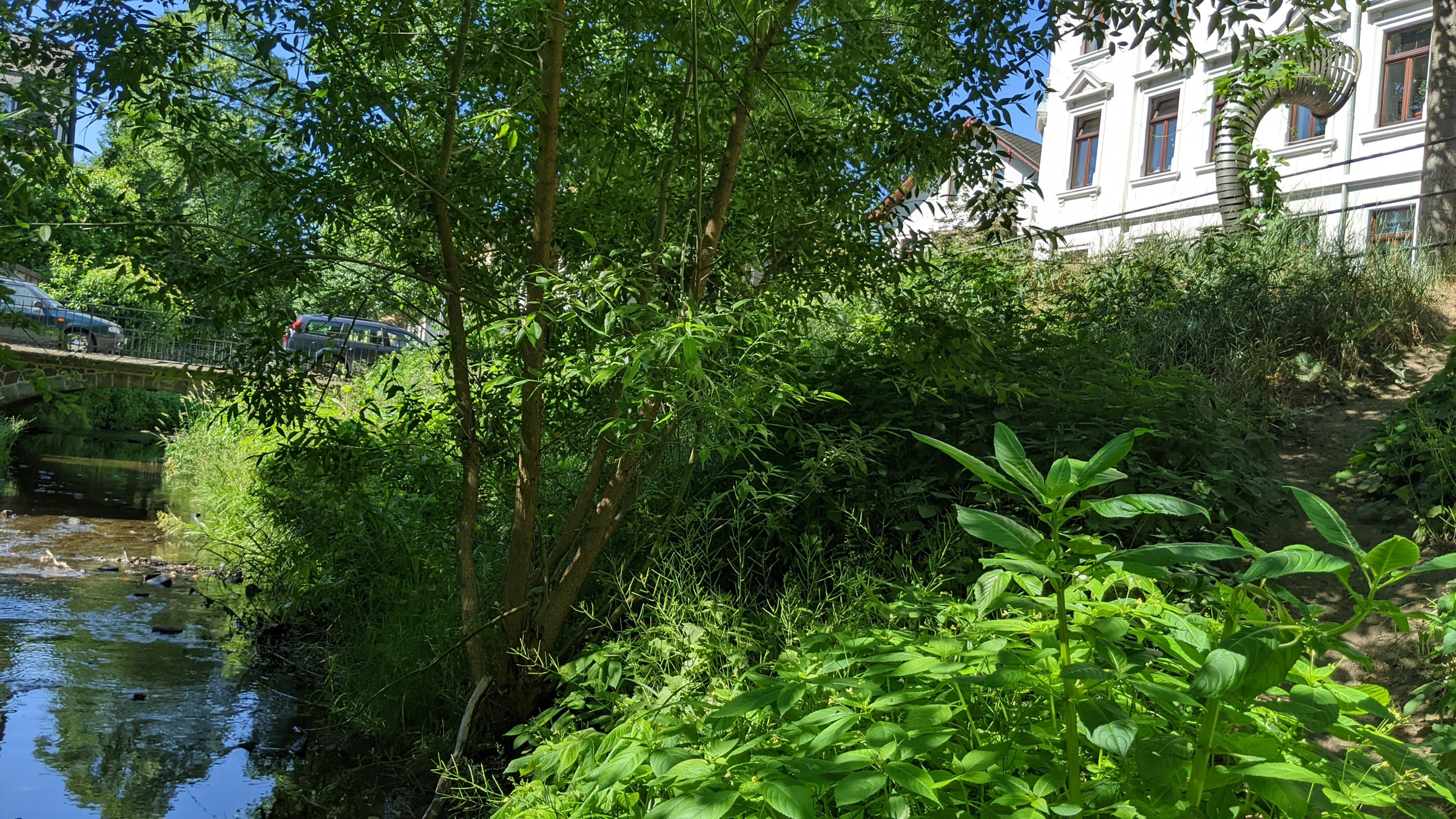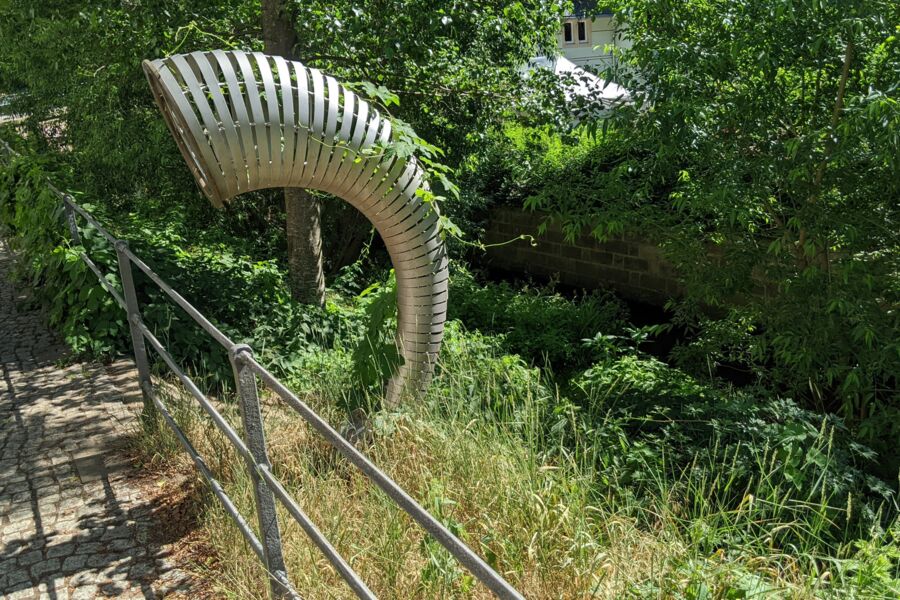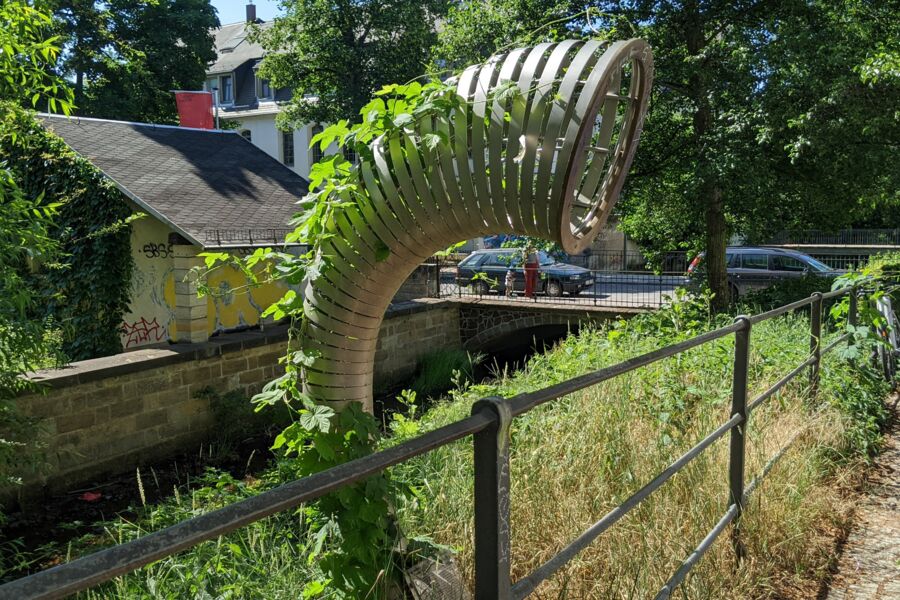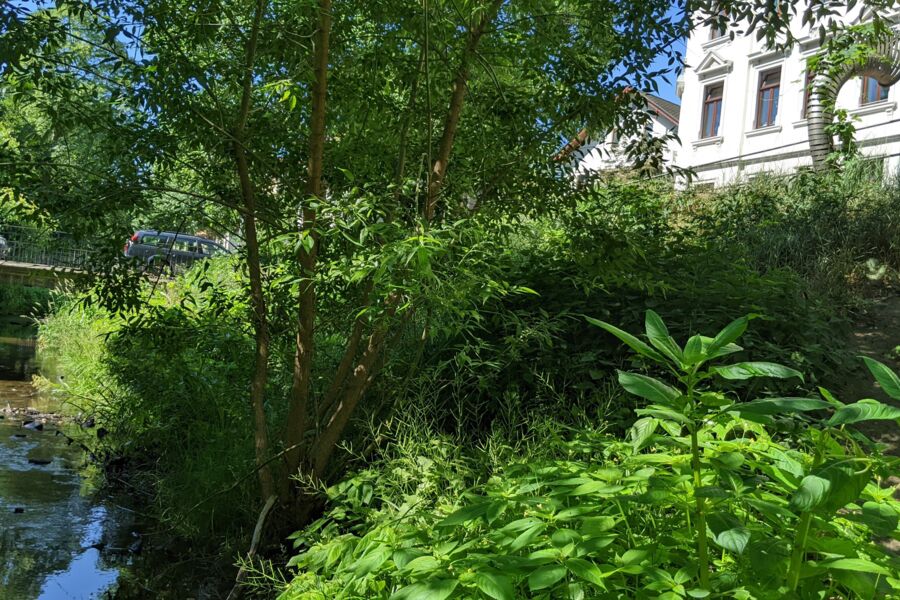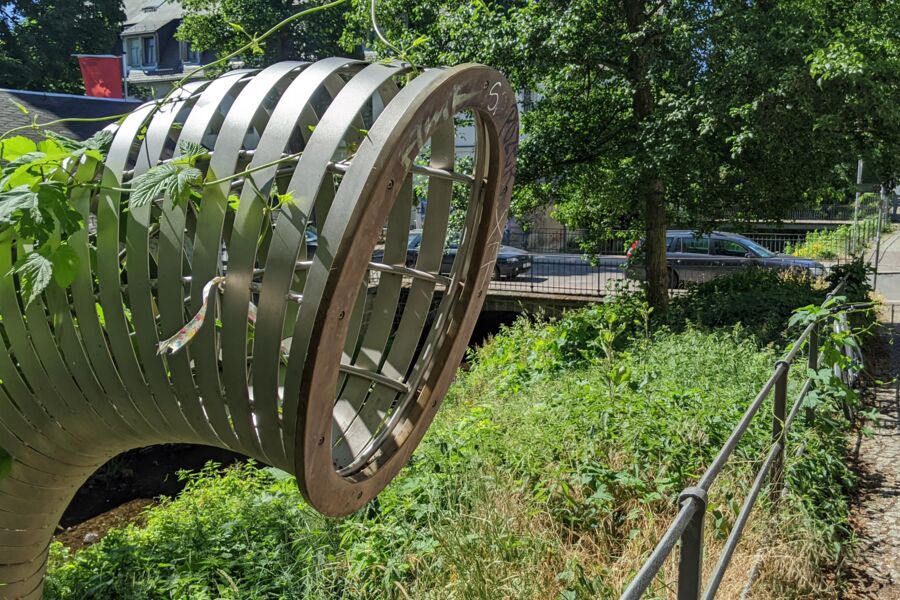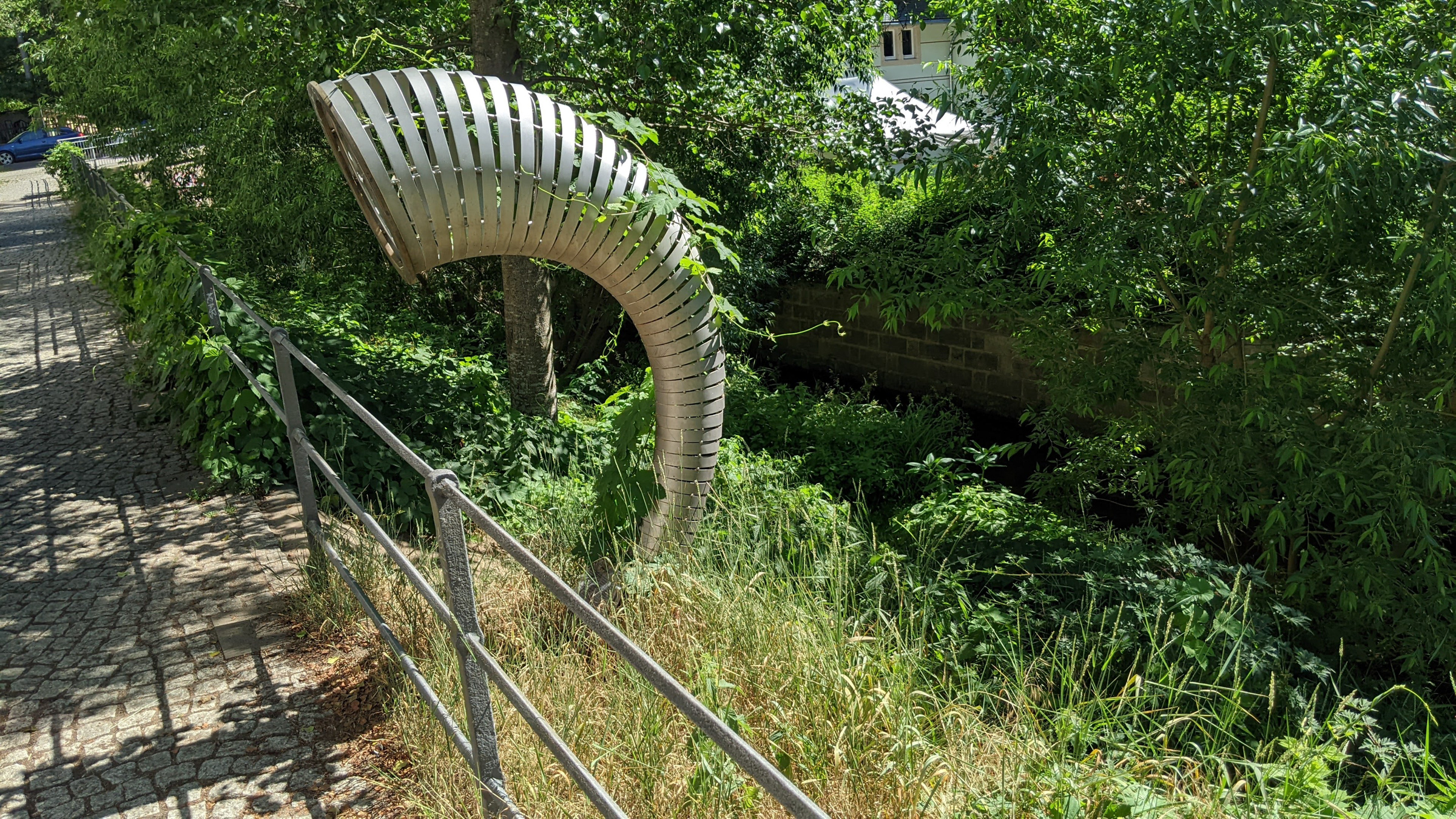
Water telephone
She gurgles, swooshes and sometimes just drifts by silently – the river Prießnitz.
At her banks, a symbolic ear trumpet, reminiscent of an old-fashioned telephone without mouthpiece, hints at it: where in the city can you still listen to a little stream? And watch it while doing so? While a lot of brooks in Dresden disappear in subterranean sewage pipes and you hear their murmuring from the manhole lids at the most, passers-by may enjoy the rippling and burbling of the Prießnitz along her close to nature banks.
She rises in the east of the Rossendorf pond and crosses the Dresden heathland, flowing into the river Elbe. On her way, she forms the border river between the districts Äußere Neustadt and Radeberger Vorstadt.
In the course of the centuries, the river Elbe has transported material with her and washed it ashore in a curve on the right-hand side at the estuary of the Prießnitz. Here the Sorbs established a settlement which was called “Altendresden”, the modern “Innere Neustadt” (inner new town). They gave a name to the little river. The original West-Slavic word ‘breza’ means ‘birch’, and ‘-nica’ means ‘place’.
In the grounds of the Prießnitz, you can discover birches and other trees and, moreover, marsh marigold and sundew, water violet and march iris. Bullfinches, wrens, grey wagtails and kingfisher have their habitats here. Brown trout and brook lamprey bustle around in the cool water. Mallard ducks and swans may be watched at the estuary.
Dem Prießnitz-Wasser schrieb man früher heilende Wirkung zu. Übrigens heißt der Prießnitz-Wickel mit einem in kaltem Quellwasser getränkten Umschlag und Verband nicht nach
In former times, the Prießnitz water was ascribed a healing effect. By the way, the so-called Prießnitz compress, a cover soaked with cold spring water, wasn’t named after the river but after the healer Vincenz Prießnitz, who invented it in Silesia in 1816.
From the 1930s on, several baths were established along the stream, e.g. the “Linckesche Bad” at the estuary that became famous from E.T.A. Hoffmann’s tale “Der goldne Topf” (“The Golden Pot”). Water mills, too, rattled at the stream that covers a distance of 25.4 kilometres and a gradient of 175 metres.
But it hasn’t always been that Arcadian. For centuries, it had literally been stinking to high heaven. Tap water, excrements and garbage were flowing untreated into the Elbe. A sewerage wasn’t built until 1860. Since 2018, a pipeline running underneath the Elbe has been making sure that waste water doesn’t pollute one of Dresden’s cleanest streams any more at heavy rainfall.
Even if the river bed dries out here and there in hot summers, it sees floods repeatedly, too. In this case, the river carries more than one cubic metre water per second at times. In the 2002 flood, the Elbe backed up as far as the Kraszewski Museum and the gardens and yards in Prießnitzstraße. In 2013, the Prießnitz flooded numerous bankside premises again.

